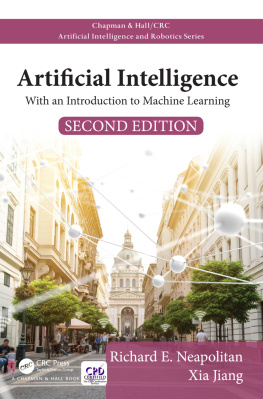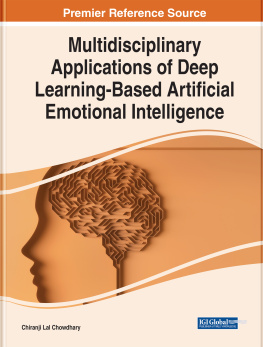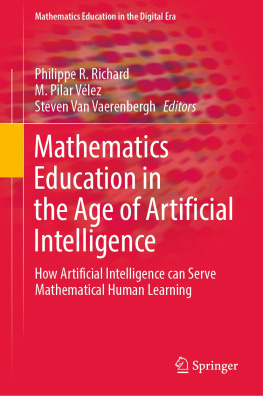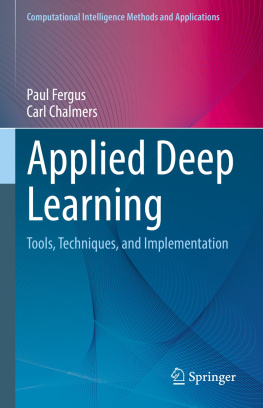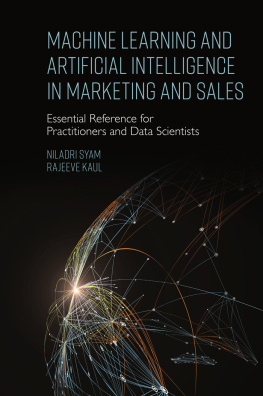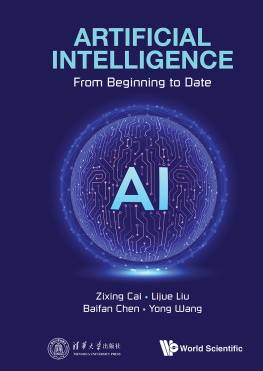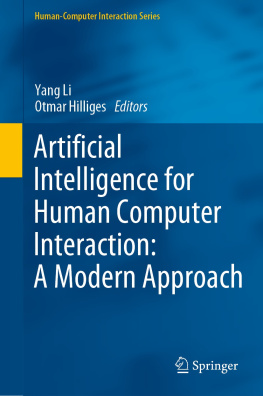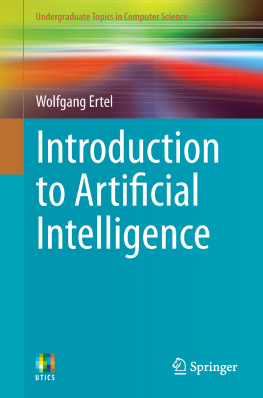Table of Contents
Guide
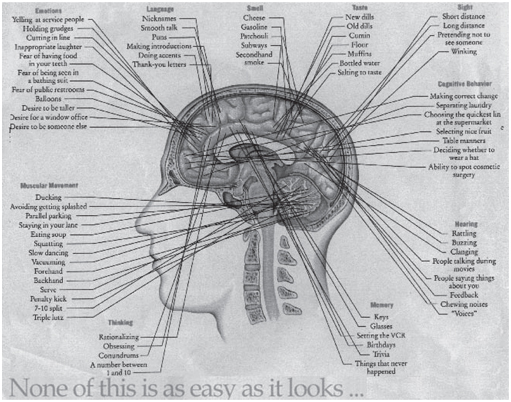
In 1990, I (Richard Neapolitan) was relatively new to the field of Artificial Intelligence (AI). At the 6th Conference on Uncertainty in Artificial Intelligence , which was held at MIT, I met Eugene Charniak, who at the time was a well-known researcher in AI. During a conversation while strolling along the campus, I said, I heard that the Japanese are applying fuzzy logic to AI Gene responded I dont believe the Japanese have been any more successful at AI than us This comment substantiated that which I had already begun to realize, namely that AI seemed to be a pronounced failure.
Dr. Charniaks comment was correct in 1990 and it is still correct today. If we consider AI to be the development of an artificial entity such as the Terminator in the movie by the same name or HAL in the classic sci-fi movie Space Odyssey , then we have not developed anything close. The Terminator and HAL are artificial entities that can learn and make decisions in a complex, changing environment, affect that environment, and communicate their knowledge and choices to humans. We have no such entities.
So why does the field of AI persist, and why was this book written? In their efforts to develop artificial intelligence, researchers looked at the behavior/reasoning of intelligent entities such as humans, and developed algorithms based on that behavior. These algorithms have been used to solve many interesting problems, including the development of systems that behave intelligently in limited domains. Such systems includes ones that can perform medical diagnosis, diagnose problems with software, make financial decisions, navigate a difficult terrain, monitor the possible failure of a space shuttle, recognize speech and faces, understand text, plan a trip, track a target, learn an individuals preferences from the preferences of similar individuals, learn the causal relationships among genes, and learn which genes affect a phenotype. This book concerns these algorithms and applications. Before discussing the content of this book further, we provide a brief history of AI.
We start by discussing early efforts to define artificial intelligence.
Abandoning the philosophical question of what it means for an artificial entity to think or have intelligence, Alan Turing [] developed an empirical test of artificial intelligence, which is more appropriate to the computer scientist endeavoring to implement artificial intelligence on a computer. The Turing test is an operational test; that is, it provides a concrete way to determine whether the entity is intelligent. The test involves a human interrogator who is in one room, another human being in a second room, and an artificial entity in a third room. The interrogator is allowed to communicate with both the other human and the artificial entity only with a textual device such as a terminal. The interrogator is asked to distinguish the other human from the artificial entity based on answers to questions posed by the interrogator. If the interrogator cannot do this, the Turing test is passed and we say that the artificial entity is intelligent.
Note that the Turing test avoids physical interaction between the interrogator and the artificial entity; the assumption is that physical interaction is not necessary for intelligence. For example, HAL in the movie Space Odyssey is simply an entity with which the crew communicates, and HAL would pass the Turing test. If the interrogator is provided with visual information about the artificial entity so that the interrogator can test the entitys ability to perceive and navigate in the world, we call the test the total Turing test. The Terminator in the movie of the same name would pass this test.
Searle [. If it is able to convince a Chinese interrogator that it is a human, then the Turing test would be passed.
Searle asks Does the program literally understand Chinese, or is it only simulating the ability to understand Chinese? To address this question, Searle proposes that he could sit in a closed room holding a book with an English version of the program, and adequate paper and pencils to carry out the instructions of the program by hand. The Chinese interrogator could then provide Chinese sentences through a slot in the door, and Searle could process them using the programs instructions and send Chinese sentences back through the same slot. Searle says that he has performed the exact same task as the computer that passed the Turing test. That is, each is following a program that simulates intelligent behavior. However, Searle notes that he does not speak Chinese. Therefore, because he does not understand Chinese, the reasonable conclusion is that the computer does not understand Chinese either. Searle argues that if the computer is not understanding the conversation, then it is not thinking, and therefore it does not have an intelligent mind.

Figure 1.1 The Chinese room experiment.
Searle formulated the philosophical position known as strong AI, which is as follows:
The appropriately programmed computer really is a mind, in the sense that computers given the right programs can be literally said to understand and have other cognitive states.
Searle, 1980
Based on his Chinese room experiment, Searle concludes that strong AI is not possible. He states that I can have any formal program you like, but I still understand nothing Searles paper resulted in a great deal of controversy and discussion for some time to come (see, for example, [Harnad, ]).
The position that computers could appear and behave intelligently, but not necessarily understand, is called weak AI. The essence of the matter is whether a computer could actually have a mind (strong AI) or could only simulate a mind (weak AI). This distinction is of greater concern to the philosopher who is discussing the notion of consciousness [Chalmers, ]. Perhaps a philosopher could even argue that emergentism might take place in the Chinese room experiment, and a mind might arise from Searle performing all his manipulations. Practically speaking, none of this is of concern to the computer scientist. If the program behaves as if it is intelligent, computer scientists have achieved their goal.
Initial efforts at AI involved modeling the neurons in the brain. An artificial neuron is treated as a binary variable that is switched to either on or off . This notion was first proposed in [McCulloch and Pitts, ] when he developed Hebbian learning for neural networks. In 1951, Marvin Minsky and Dean Edmonds built SNARC, the first neural network computer.
Following this accomplishment and Turings development of the Turing test, researchers became increasingly interested in the study of neural networks and intelligent systems, resulting in John McCarthy organizing a 2-month workshop involving interested researchers at Dartmouth University in 1956. He coined the term Artificial Intelligence at that workshop. Attendees included Minsky, Claude Shannon (the developer of information theory), and many others. AI emerged as a new discipline whose goal was to create computer systems that could learn, react, and make decisions in a complex, changing environment.
Cognitive science is the discipline that studies the mind and its processes. It concerns how information is represented and processed by the mind. It is an interdisciplinary field spanning philosophy, psychology, artificial intelligence, neuroscience, linguistics, and anthropology, and emerged as its own discipline somewhat concurrently with AI. Cognitive science involves empirical studies of the mind, whereas AI concerns the development of an artificial mind. However, owing to their related endeavors, each field is able to borrow from the other.

